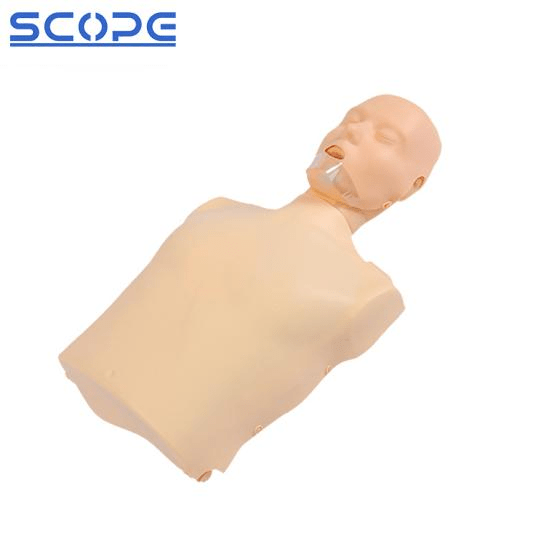What Are the Features of CPR Manikins?

CPR manikins come equipped with various features to effectively simulate a real human body and facilitate realistic CPR training. Here's a detailed breakdown of their key features:
1. Anatomical features
l Realistic chest: Mimics the human chest to help you practice proper hand placement and compression techniques. This includes things like ribs and a sternum, which provide resistance during compressions.
l Head and neck: Allows trainees to practice head tilt and chin lift maneuvers, which are essential for opening the airway during CPR.
l Airway: Allows you to practice rescue breaths with a realistic feel and potential feedback mechanisms to ensure an effective seal and adequate ventilation. Some manikins may exhibit features such as a visible chest rise following successful ventilation.
2. Feedback mechanisms
l Compression depth indicators: These provide visual or audible cues to help the trainee determine the depth of their chest compressions. Achieving the proper depth is critical for effective CPR.
l Compression rate feedback: Similar to depth indicators, these inform trainees about their compression rate, ensuring they follow recommended guidelines.
l Anatomical landmarks: Some models have visible anatomical landmarks on the chest that guide proper hand placement for compression.
3. Training capabilities
l Multiple CPR scenarios: Depending on the model, some manikins can simulate choking, blocked airways, or cardiac arrest, allowing trainees to practice various CPR techniques.
l Pulse simulators: Advanced models may have a palpable pulse point that disappears during simulated cardiac arrest but reappears after effective chest compressions.
l CPR cycle timers: These can help trainees adhere to the recommended timeframes for compressions and breaths during CPR cycles.
It's important to remember that not all CPR manikins will include all of these features. The specific features will vary depending on the type and model of the manikin, with basic models focusing on essential practice elements and advanced models providing more elaborate simulations and feedback mechanisms. Choosing an appropriate CPR manikin is determined by the specific training requirements and level of complexity. Regular maintenance and cleaning are essential for all types of CPR manikins. Even simple manikins can be extremely useful in developing essential CPR skills and increasing confidence in potential emergencies.
- Art
- Causes
- Crafts
- Dance
- Drinks
- Film
- Fitness
- Food
- Παιχνίδια
- Gardening
- Health
- Κεντρική Σελίδα
- Literature
- Music
- Networking
- άλλο
- Party
- Religion
- Shopping
- Sports
- Theater
- Wellness


